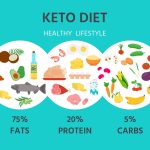Monounsaturated Fat vs. Polyunsaturated Fat: Dietary fats are a fundamental component of our nutrition, and they play a significant role in our overall health. Among the various types of fats, monounsaturated and polyunsaturated fats are well-known for their potential health benefits. In this article, we will explore the differences between monounsaturated and polyunsaturated fats, their sources, and their impact on health. Additionally, we’ll provide a comparison table to help you make informed dietary choices.
Monounsaturated Fat
Monounsaturated fats are a type of unsaturated fat with one double bond in their fatty acid chain. They are known for their heart-healthy properties and may help reduce the risk of cardiovascular diseases. Here are some key characteristics of monounsaturated fats:
- Sources: Olive oil, avocados, nuts (such as almonds, cashews, and pecans), and some seeds are rich sources of monounsaturated fats.
- Health Benefits: Monounsaturated fats can help lower bad cholesterol levels (LDL), reducing the risk of heart disease. They also have anti-inflammatory properties that may benefit overall health.
Polyunsaturated Fat
Polyunsaturated fats, on the other hand, have multiple double bonds in their fatty acid chain. They are divided into two primary categories: omega-3 and omega-6 fatty acids. Here’s an overview of polyunsaturated fats:
- Sources: Fatty fish like salmon and trout are excellent sources of omega-3 polyunsaturated fats. Omega-6 polyunsaturated fats can be found in safflower, sunflower, and corn oils.
- Health Benefits: Omega-3 polyunsaturated fats are known for their anti-inflammatory properties and their role in brain health. Omega-6 polyunsaturated fats are essential for the body but should be consumed in balance with omega-3 fats.
Monounsaturated Fat vs. Polyunsaturated Fat: A Comparison
Let’s break down the differences between these two types of fats in a comparison table:
| Aspect | Monounsaturated Fat | Polyunsaturated Fat |
|---|---|---|
| Double Bonds | One double bond in the fatty acid chain | Multiple double bonds in the fatty acid chain |
| Heart Health | Reduces bad cholesterol (LDL) levels | May reduce the risk of heart disease |
| Anti-Inflammatory | Yes | Yes |
| Omega Fatty Acids | Generally low in omega-3 and omega-6 fatty acids | Omega-3 and omega-6 fatty acids |
| Food Sources | Olive oil, avocados, nuts, and seeds | Fatty fish, vegetable oils like safflower and sunflower |
External Links
For further information and in-depth guidance on dietary fats and their impact on health, consider exploring these external resources:
- American Heart Association – Monounsaturated Fats
- Harvard T.H. Chan School of Public Health – Types of Fat
Frequently Asked Questions
1. Can monounsaturated and polyunsaturated fats be part of a healthy diet?
Yes, both types of fats can be part of a healthy diet when consumed in moderation and as part of a balanced overall eating plan.
2. What is the recommended daily intake of these fats?
There is no specific recommended daily intake of monounsaturated or polyunsaturated fats. However, they should be included as part of a diet that aligns with your overall nutritional goals and needs.
3. Are saturated fats unhealthy?
Saturated fats can be less heart-healthy when consumed in excess. It’s recommended to limit the intake of saturated fats and focus on unsaturated fats like monounsaturated and polyunsaturated fats.
4. Are there any risks associated with consuming too much polyunsaturated fat?
While polyunsaturated fats are essential for overall health, an excessive intake of omega-6 polyunsaturated fats in comparison to omega-3s can potentially promote inflammation. It’s important to strike a balance between the two.
Conclusion
Monounsaturated and polyunsaturated fats are both essential components of a healthy diet. While they share some common benefits, they have distinct characteristics and sources. By understanding the differences between these fats, you can make informed dietary choices that support your overall health and well-being. Remember that a balanced diet that includes a variety of fats in moderation is key to maintaining good health.










